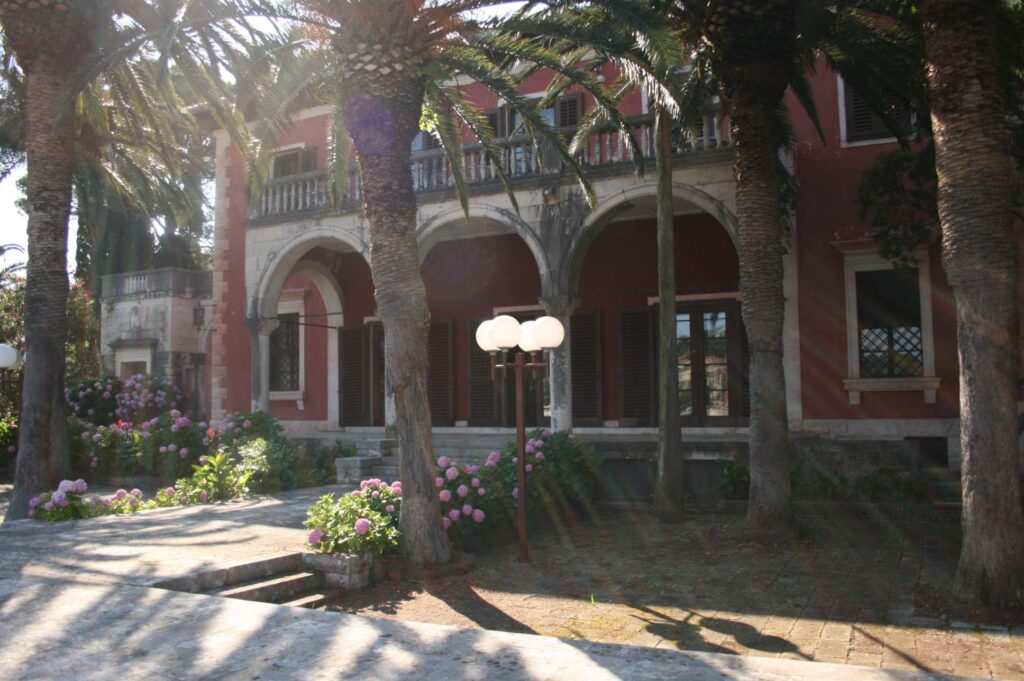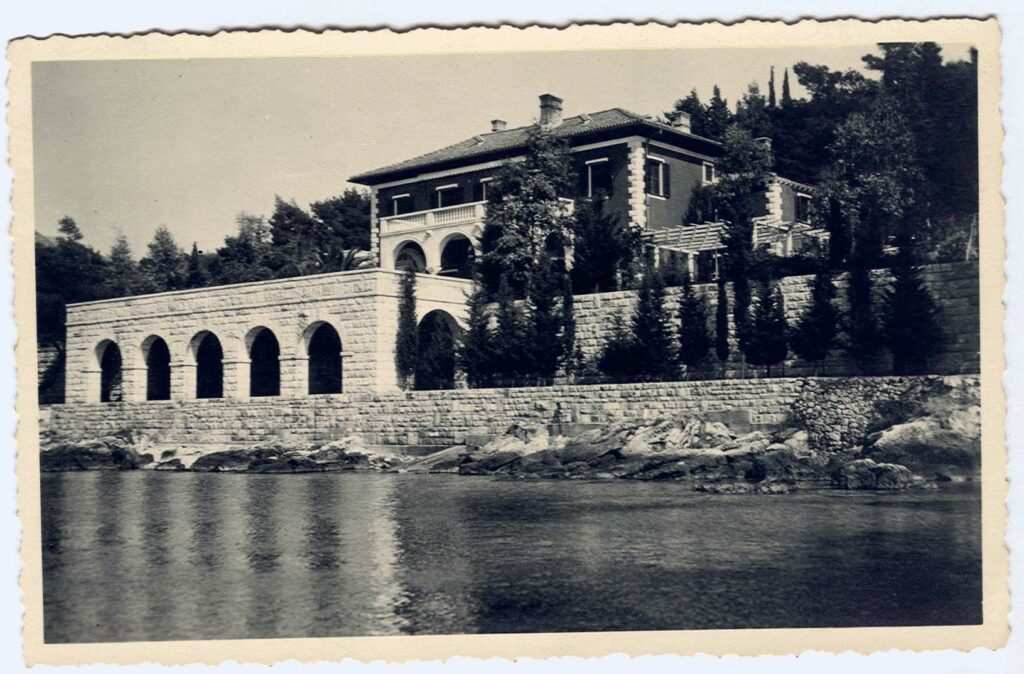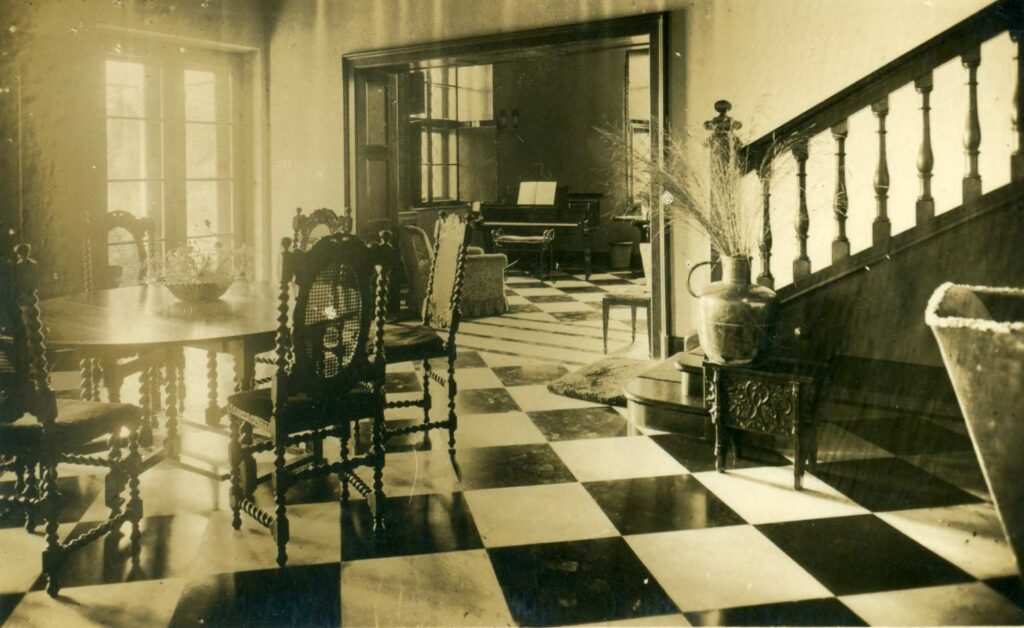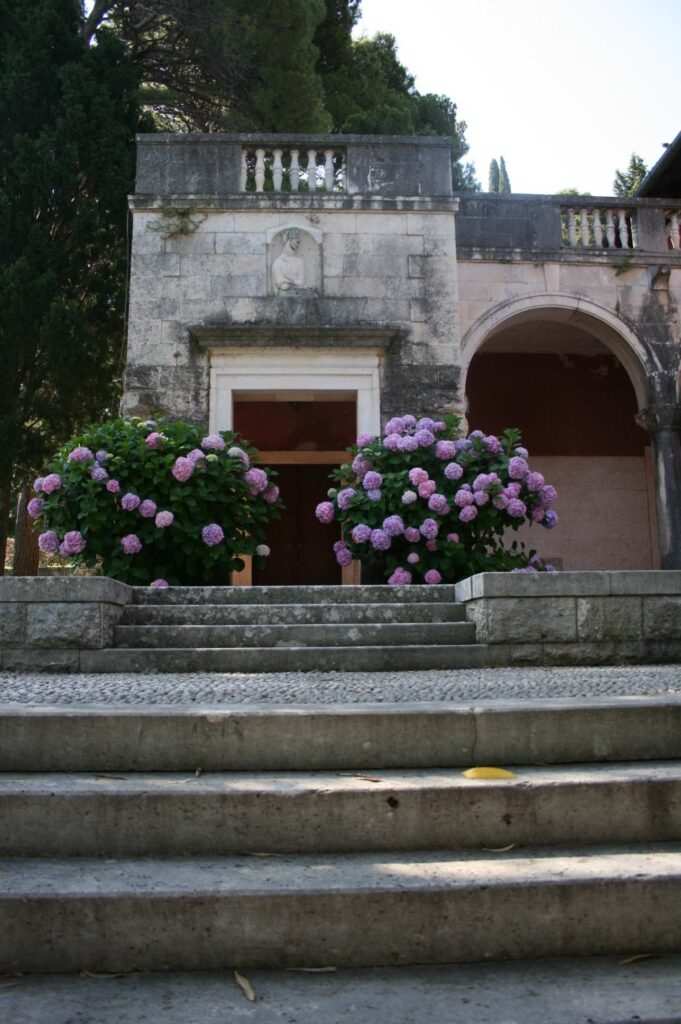From the end of the 1920s to the end of the 1930s, three significant buildings sprung up in the Dubrovnik area in a relatively short period; these buildings would significantly affect the landscape in which they are located. The buildings in question are Villa Banac in Cavtat and two buildings in Dubrovnik – today’s Museum of Modern Art in Ploče and the so-called `presidential villa’ in Lapad. The link between them is Božo Banac, the immensely wealthy shipowner who had them built, along with the architects Harold Bilinić and Lavoslav Horvat. Namely, the villas in Cavtat and Ploče were built for his personal needs, while the one in Lapad was built for his sister, Ada, married Pitarević; the villa in Lapad was bought by their brother, Karlo Banac, during the construction process.
The connection between Banac and the architects Bilinić and Horvat was undoubtedly the sculptor Ivan Meštrović. Meštrović crowned his long-standing acquaintance and friendship with Božo Banac and his first wife Marija, née Račić, with the construction of a magnificent mausoleum for the prematurely deceased Marija and her family. The Spanish flu ended the wealthy Račić family line in 1918. In accordance with the wishes of Marija Račić Banac and the foundation set up by her mother, Meštrović worked on the Račić Family Mausoleum in Cavtat from 1920 to 1922. The collaboration between the renowned sculptor and the young architect Bilinić, an Italian student, began in 1922, and probably even earlier. Božo Banac had a villa built at the very beginning of the Sustjepan peninsula, on the land he inherited from the Račić family; its construction was entrusted to the architects Bilinić and Horvat.
Built in 1928, Villa Banac embodies the architecture characteristic of countryside manors in this area, both with regard to its location and relationship to the landscape, as well as to its architectural form and the manner in which it is integrated into the surrounding landscape. The two-storey building has a split floor plan. Its central part has a symmetrical arrangement of openings, while the ground floor features a porch with a balcony above it and three doors flanked by window openings.
All openings on visible facades are set into richly profiled frames. On the left side, a loggia is attached to the building in order to provide first visual contact with the villa when a visitor climbs the monumental stairs through the main entrance. Above the loggia’s opening, there is a relief depicting Marija Račić Banac, which is the work of Ivan Meštrović and is similar to a relief in the Račić Family Mausoleum.
The skilful use of classicist elements and the building’s integration into the landscape, as well as its overall composition make this villa a modern representation of Dubrovnik’s countryside manor heritage. Evidently satisfied with the results of the work of the two architects, Banac also hired them to design a much more demanding building in Ploče.
All this architecture reflects the power and wealth of a man who was the representative and co-owner of Atlantska plovidba “Ivo Račić”, the founder of Yugoslav-American Shipping, the founder of Yugoslavian Lloyd steamship company, a member of the main board of Lloyd’s Register of Shipping. Not only that, but he was also an entrepreneur with serious intentions to invest in tourism. Villa Banac in Cavtat would be used for such purposes following its nationalization after the Second World War; namely, it became a holiday resort for the Macedonian federal government.
Banac himself also used the villa for family vacations, but he would occasionally lend it to friends for their own vacations. One such instance took place in 1936, when, at Banac’s invitation, the Duke of Kent, brother of King Edward VIII, and his wife Marina, Princess of Greece and Denmark, stayed at the Banac villa. The couple landed in the Cavtat port in a seaplane, where they were met by Božo Banac and his second wife, Milica Ivanović. They stayed for 16 days; on leaving, they thanked the people of Cavtat for understanding their desire for solitude and peace, noting that their vacation was `an utter pleasure‘.



